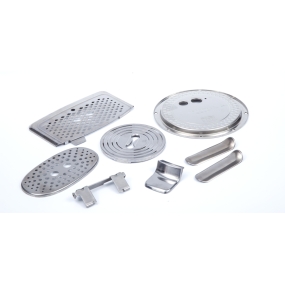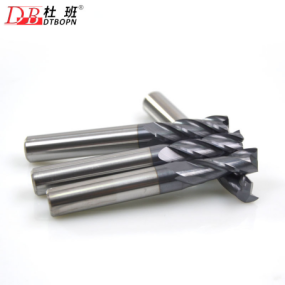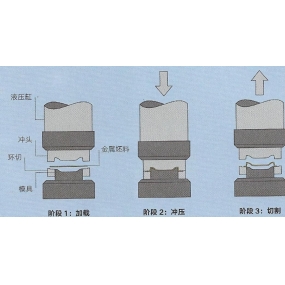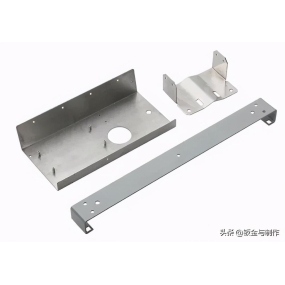Sheet metal is a comprehensive cold working process for metal sheets, including cutting, punching/cutting/composite, folding, welding, riveting, splicing, forming (such as automotive body), etc. Praecipientia eius est, quod densitudo eiusdem component is consistentia est.
What is Shenyang Sheet Metal Processing?
Sheet metal generally is made by manual or die stamping some metal sheets to produce plastic deformation, forming the desired shape and size, and can be further welded or processed with a small amount of mechanical processing to form more complex parts. Sheet metal processing is called sheet metal processing, and the main processes include cutting, bending, shaping, welding, riveting, etc., which require a certain amount of geometric knowledge. Partibus metallis lapidibus sunt partes metallis thinas quae per stampionem, bending, stretching, et ceteris metodes processantur. Exemplo, ferrum exterius raedae part is metallis est.
Problema common in sheet metal processing and stamping parts processing?
Burr: During the punching or edge cutting process, incomplete excess material is left, and burns are generated at the lower part of the plate section. Based on the section, when the height of the burns is 0.2mm or more, the iron powder generated will damage the mold and produce protrusions and depressions.
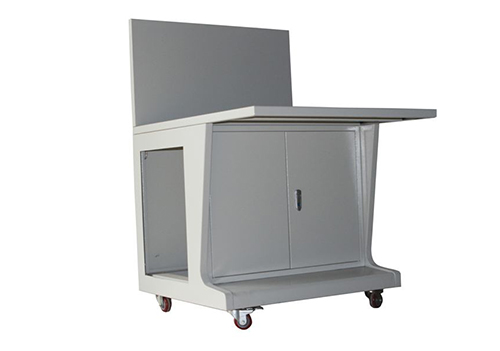
Convex concave: Abnormal protrusion aut depression super superficiem materiae, causa ex mixione objecti alienis (ferro filios, pulvere) in linea inventionis.
Impressio Roller: causa a foreign objects adherent to the cleaning or feeding rollers (occurring at a fixed pitch), in general, the roller printing foreign objects on the sheet can be removed.
Impressio diagrammatica: occurrit quando diagramma ventilat et subito cessat aut acceleratur.
Ruli turbationem et angulum colligintem: Scena colligintem causa a parva interventio inter ventilatores ducentibus super linum inebriationis aut ventilatores ducentibus super fusum, propter pascendum volumine in statera non adferentem.
Scratches: The main reason for scratches on parts is sharp scratches on the mold or metal dust falling in the mold. Preventive measures include grinding the scratches on the mold and removing metal dust.
Bottom cracking: The main reason for the bottom cracking of parts is poor plasticity of the material or excessive compression of the mold edge ring. Preventive measures include replacing the material with better plasticity or loosing the edge ring.
Wrinkles in the side wall: The main reason for wrinkles on the side wall of parts is insufficient material thickness or deviation during the installation of upper and lower molds, resulting in a large gap on one side and a small gap on the other side. Preventive measures include timely replacement of materials and readjustment of molds.
Contenium artificis ab internet est. Si quaestiones habes, contacta me ut deleam illum!


 English
English Spanish
Spanish Arabic
Arabic Portuguese
Portuguese Belarusian
Belarusian Japanese
Japanese Russian
Russian Icelandic
Icelandic Bulgarian
Bulgarian Azerbaijani
Azerbaijani Estonian
Estonian Irish
Irish Polish
Polish Persian
Persian Boolean
Boolean Danish
Danish German
German French
French Filipino
Filipino Finnish
Finnish Korean
Korean Dutch
Dutch Galician
Galician Catalan
Catalan Czech
Czech Croatian
Croatian Latvian
Latvian Romanian
Romanian Maltese
Maltese Malay
Malay Macedonian
Macedonian Norwegian
Norwegian Swedish
Swedish Serbian
Serbian Slovak
Slovak Slovenian
Slovenian Swahili
Swahili Thai
Thai Turkish
Turkish Welsh
Welsh Urdu
Urdu Ukrainian
Ukrainian Greek
Greek Hungarian
Hungarian Italian
Italian Yiddish
Yiddish Indonesian
Indonesian Vietnamese
Vietnamese Haitian Creole
Haitian Creole Spanish Basque
Spanish Basque


